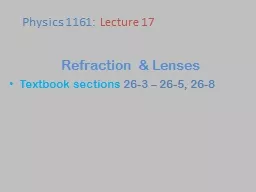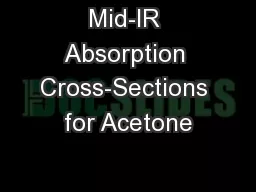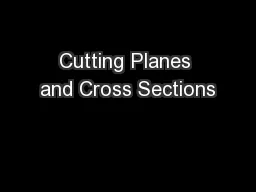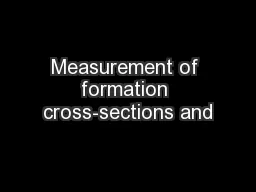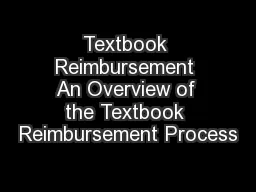PPT-Textbook sections
Author : alida-meadow | Published Date : 2016-06-30
263 265 268 Physics 1161 Lecture 17 Refraction amp Lenses Physics 1161 Lecture 17 Slide 2 Indices of Refraction Checkpoint Refraction n 1 n 2 When light travels
Presentation Embed Code
Download Presentation
Download Presentation The PPT/PDF document "Textbook sections" is the property of its rightful owner. Permission is granted to download and print the materials on this website for personal, non-commercial use only, and to display it on your personal computer provided you do not modify the materials and that you retain all copyright notices contained in the materials. By downloading content from our website, you accept the terms of this agreement.
Textbook sections: Transcript
Download Rules Of Document
"Textbook sections"The content belongs to its owner. You may download and print it for personal use, without modification, and keep all copyright notices. By downloading, you agree to these terms.
Related Documents

